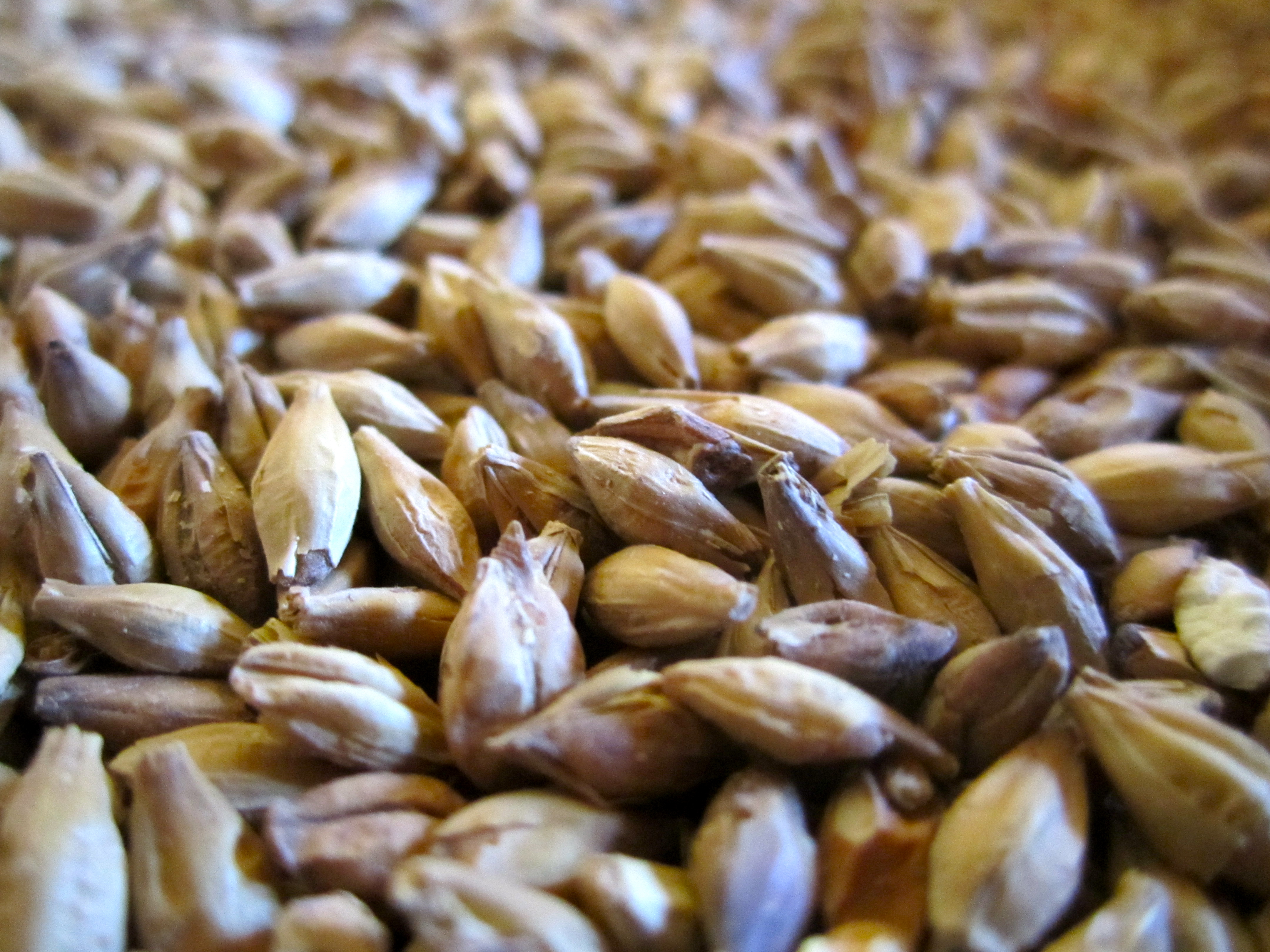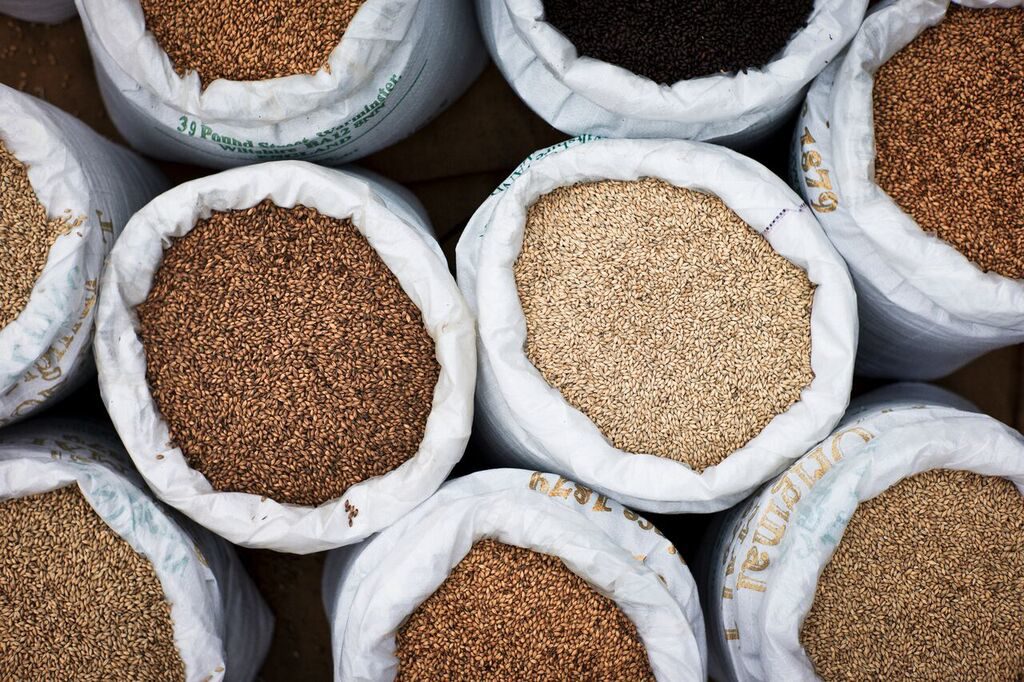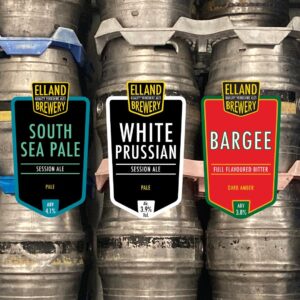“Consumers are more demanding of their beer than ever. They are more exacting and the hunger for that variety in beer is only going one way, up. So it’s up to the brewer to work out what’s next, and what will resonate with the drinker. And more frequently, they are turning to malt to help create and define those styles,” explains Ross Turner, key account manager at PureMalt.
The East Lothian, Scotland-based company specialises in the production of refined malt extracts that are principally used further down stream in the brewing process in the base beer to change flavour or colour.
“We have definitely witnessed growing interest in our products. We already sell to 68 countries, but as the scale of competition between brewers to express styles continues to grow, as does interest in malt extracts,” he says. “There is a passion and an appetite to create new brands and seasonal beers, I think the four beer portfolio for many, is ancient history. It’s a positive infection taking over the brewing planet.”
PureMalt’s key offering to breweries is divided into three categories. Roast extracts are a diverse range of roast malt extracts for addition in beer range from high colour/low flavour to high flavour/low colour. Its crystal extracts are described as full in flavour and colour. These products have a toffee/caramel flavour character combined with an red hue. Finally, its pale malt extracts are pitched as being best suited for use in reduced or non-alcoholic beers and soft drinks.
Turner acknowledges that detractors to malt extracts exist in the industry, and understands a traditionalist standing, but he adds that the company is trying to provide a range of tools for breweries to create diverse styles without the substantial investments that come with grain handling and equipment outlays.
“Some traditionalists choose not to use extract products but those that know the product more intimately understand that it makes sense in many situations. We have a 900 year old site that houses a mill built by the local covent,” explains Turner. “There is history there, and there is provenance. The process we undertake starts like the brewing process and we process wort in the same way. It’s not like we are producing a chemical additive or telling people to add nasties to their beer. Many people see the benefit in malt extracts.
He adds: “We encounter a great deal of bigger breweries that are creating industrial lagers, and their breweries can create those styles efficiently and in high volumes. But they are less flexible to change, so the ability to receive and use speciality malts and cereals is not really there.
“So you either make a business decision and invest in that, or turn to us and our proposition. In our experience, this issue is less of a problem to British brewers as they often have a speciality malt handling facility. But go further afield to Africa, Central and South America, and the Far East, the breweries are younger and often purpose-built to produce lager so they don’t really have that flexibility.”

Recent research confirmed that Europe was the leading regional market for malt ingredients market last year. The continent is predicted to continue this dominance over the malt ingredient market across the coming five years. Elsewhere, Asia Pacific is a fastest growing regional market for malt ingredients owing to growing demand for beer and other alcoholic drinks. But a key driving force in each geography is the production of beer.
For Dr Nigel Davies, manufacturing and technical director at Muntons, demand from “craft” breweries for its malt continues to grow dramatically, both here and overseas.
“We have taken the line that malt has such a key role to play in the flavour and the colour qualities it adds to beer. Are all breweries ready to fully exploit that? We are getting there with some of the bigger breweries but with the craft sector, we are seeing it a lot more,” he explains. “They have taken more to the qualities malt can add to your beer.”
Davies adds: “We are also seeing continued demand with the malt extracts we offer. Big breweries recognise it as a way to to develop their brand and to help create new ones. And for breweries large and small, it offers a cost advantage, too. It is a way of offering brewers process optimisation, it takes out the variability and helps manage costs. Removing potential variation in your beer is a quality many brewers want.”
Another figure aware of the key role malt plays in beer is Chris Garratt, managing director of Britain’s oldest working maltings, Warminster, who calls this period in UK brewing as “an appropriate time for malt”.
“There is an ongoing fascination with hops. But throughout that intense study, the importance of malt has somehow been lost. That is more than just unfortunate, it’s also dangerous,” he explains. “There is just as much excitement around experimenting with malt, as beer is liquid malt. Beer cannot be made without it and it should not be a god-given thought that you will have it each year. As each year, the demand on grain is ever-changing. The cut and thrust of availability you have in hops, you also have in grain worldwide. It should not be taken for granted.”

Garratt explains that malt is in a tight state of supply and demand worldwide.
He says: “Right now, we can remember the weather we had in Autumn going into Spring. We had the wettest winter for many years, or even possibly records began. That was not good news for winter crops, with many destroyed.
“Following on, the winter crop suffered at the planting stage and never really recovered. The winter crop, with the exception of Maris Otter, nitrogen levels were high, and the grain size was small. Due to the age of Maris Otter, and its stubbornness to survive, it recovered somewhat. So the supply and demand is just about in balance in that sense.
“Looking at the spring crop, it went in a reasonably good seed bed. The cool start to the summer didn’t help it mature but the summer was somewhat late to get going so it helped it catch up, so quality and quantity has been reasonable.”
A pensive Garratt believes that fundamentally, the importance of malt means that more should be made of the role it plays, reiterating the idea that it is incorrect to think that hops are the be-all and end-all of beer DNA.
“As the oldest working maltings, we represent the old floor malt process, which is as it has been made for centuries. Technological changes such as the introduction of the Saladin box for malting barley, changes in duty on volume, and the ability to produces more in smaller footprints, have impacted on the relationship brewers had with their maltsters,” he says. “Breweries used to be closer to their maltsters in the supply chain, but I can see that changing and becoming stronger again. We involve our customers, as much as possible. They are not simply clients, it’s a two-way relationship.” 
While Garratt believes that malt has played second fiddle to the focus on hops in the beer landscape for too long, he says malt is now at least “understood”.
“Breweries and their brewers understand more and more about the malt types and the styles of beer that can be produced from the malt available to them. People now talk malt, and they enjoy talking malt. Previously at most it would be order of Pale Ale and Maris Otter. Move forward, there is a growing need for low colour malt and an ever-increasing need for maltier malt such as Milds, Viennas and Munichs, it’s a sign of the times,” he explains. “This has been catalysed by brewers truly discovering malt, the wealth of world beers and the way the market enjoys them, as well as the way malt can allow you to develop your beers and balance that beer.”
Malting Box is craft malting service and range of equipment that supports craft brewers and distillers. It enables brewers to specify, control and experiment with the malt you use to brew, creating your own unique local malt in the process.
According to the company, you specify the exact type of grain you want malted or you could also supply your own locally grown or sourced grain. Malting Box then malts the grain to the brewer’s specification at its UK site using our own purpose designed and built equipment.
In addition to its craft malting service, Malting Box also supplies three scalable equipment ranges of craft malting equipment, allowing breweries to run their own craft malting.
Hugh Alexander, master maltster at Malting Box, recently explained that the UK is at something of a strange crossroads, with a creeping polarisation occurring of which he suspects most are unaware.
He says: “I think it’s to do with living in either an urban environment or a countryside setting. The BBC Radio 4 programme ‘Farming This Week’ last week focussed on the need to address the problem of a growing number of countryside species becoming extinct. We hear that such and such a species has become extinct from an area. It’s emotive language, but not strictly correct if the species can be found in another area. It’s not extinct, it just doesn’t live in that area anymore.
“Along with the EU directives about conservation, various wildlife charities such as the RSPB (Royal Society for the Protection of Birds) and WWF (Worldwide Fund For Nature) have been urging the farmers of Britain to increase field margins and areas within their farms to allow the wildlife present to thrive and flourish. And TV programmes such as Countryfile have, it seems, been formulated to portray our countryside as an area specifically set up to provide weekend respite for those living in an urban environment. They always choose an area of outstanding natural beauty for their broadcast.
“This does have an impact on malting and brewing in a roundabout way. Our urban dwellers want a lifestyle whereby they can choose which microbrewery beer to drink today, and they have a huge choice. The beer may not even be from the UK. They want the choice as to which cuisine they dine on. They want the countryside set up for them to detox mentally. They want the cheapest prices in the supermarkets, and yet they talk earnestly about conservation.
“It’s as though everything outside this urban bubble is just set up for them to exploit. By foreign supermarket chains offering the lowest price, they are condemning our farmers to life on a low wage. Are farmers also not entitled to a fair lifestyle? How can a city dweller castigate a farmer for intensive farming and spoiling the environment, when they are happy to consume foods which have thousands of air miles and quantities of CO2 expended, and don’t necessarily conform to our standards of welfare.
“So, what’s the answer? It would be naïve to assume we will all buy local and all grow our own vegetables and drink local beer and eat local bread… but there is an historical precedent. When producing my beer, I have examined the idea of value and it has astounded me on occasions. We can break down all the component costs which go into the bottle of beer. The highest cost is the label, which is then thrown away when the beer is poured. The cost of the malt in a bottle of our beer is 3.39 pence, whereas the label is 40 pence. So, that’s 3.39 pence for the food value and 40 pence to throw away. Does this make sense to anyone?
“What I hope it shows is that the commercial value input from the countryside is so much lower than that of the urban input, yet in the end the urban input is discarded and the countryside input utilised and has some real value.
“So, stop knocking our farmers, the playing field is already far from level for them and they do the best they can under very difficult circumstances.”
Elsewhere, John S Middleton, UK marketing specialist at malt manufacturer Weyermann explains that the UK brewing industry is feeling growth in the production of organic specialty malts.
“With more than 80 specialty malts in our portfolio. we have always adopted a policy from the outset not promote their base malts in the UK as there are many British maltsters out there offering good quality base malts competitively so to challenge them on their “patch” would not be either sensible or competitive and could well detract from the success to date our specialty malt sales are having,” he says.
Middleton adds: “This serious growth of craft breweries has also given the larger UK maltsters something to think about. Not so long ago they were about to phase out sack malt in favour of bulk delivery due to high labour costs, time to load their vehicles and delivery along with health and safety reasons putting pressure on the smaller breweries to install bulk silos. This has all changed and sack malt is still the choice of the majority of craft brewers and readily available as it should be.
“The dramatic rise in craft brewing has now also come to the attention of the larger regional brewers who once considered craft breweries as no threat to them. Now many have installed small craft pilot brewery plants within their breweries to enable them to develop their own new beers and to become craft brewers themselves.”
But while Warminster’s Garratt is wholeheartedly positive about the renaissance in malt and UK beer, he is keen to point out that the biggest threat to the ingredient would be quality beer losing the value it has in the eyes of many drinkers.
He explains: “Many would not appreciate it but as I’ve said, there is not a god-given right to have barley. Farmers don’t have to grow it, people can’t forget that. But we do know that farmers at best want to grow high-yielding varieties and would rather be growing wheat, so barley sits in that rotation.
“Everything we do here is unique. It has character, and it will produce beer of a certain quality, of a certain character. That may mean however that it won’t be the same every time. It’ll produce a beer that the brewer will love, and be proud of.”
He concludes: “Malt is the table from which everything else is set.”









